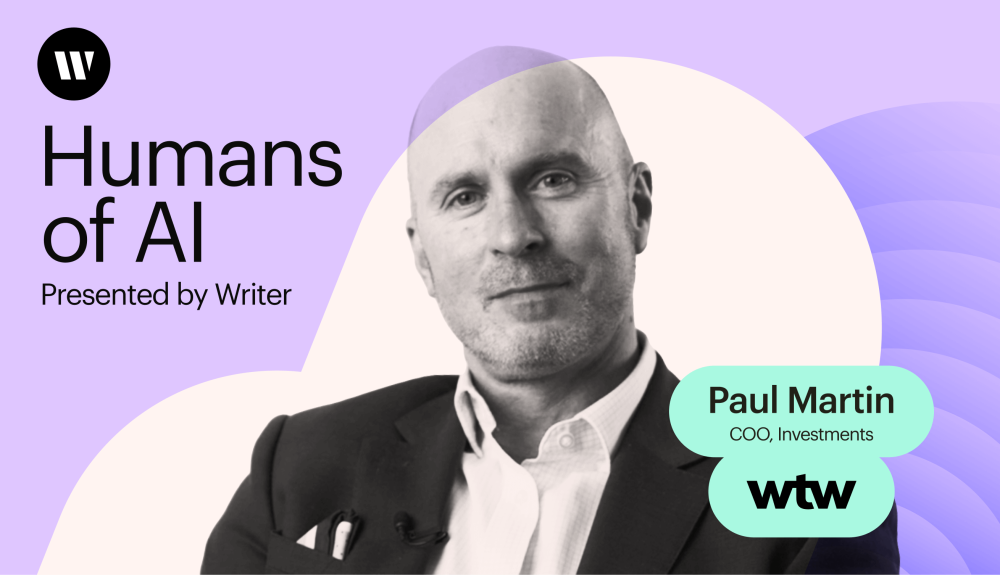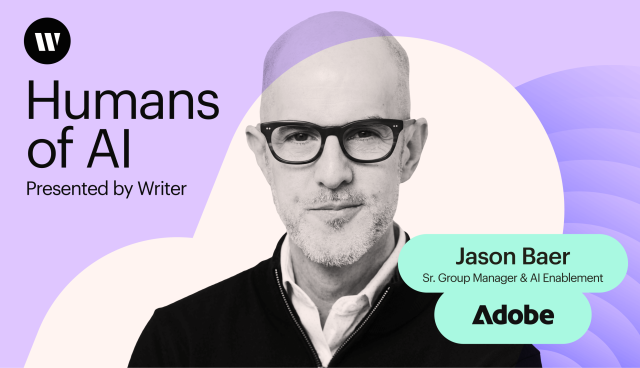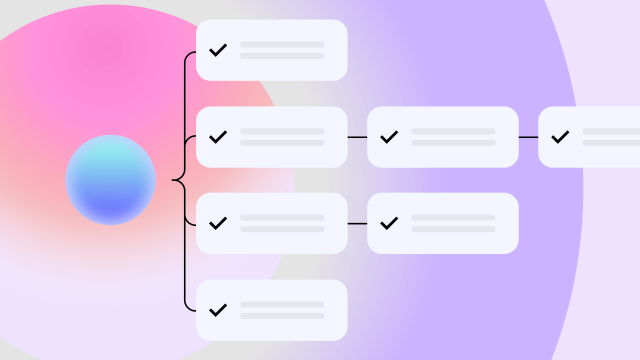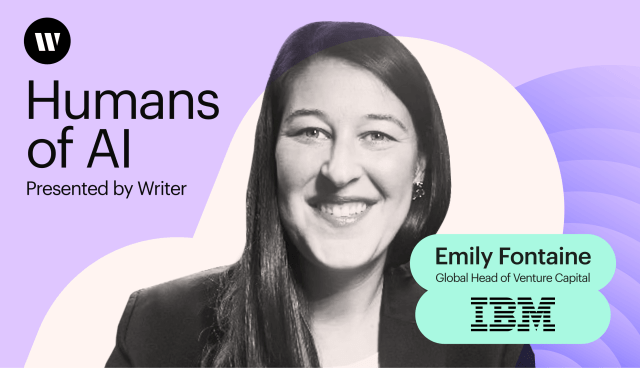Humans in the loop
– 9 min read
From technophobe to AI champion: WTW’s Paul Martin

What if we told you that one of the biggest obstacles to AI adoption in business wasn’t a lack of technology or resources but a lack of understanding and vision from the top down? Meet Paul Martin, the COO of the investment business at Willis Towers Watson (WTW), who’s breaking down these barriers with his remarkable journey from technophobe to AI advocate.
In this episode of Humans of AI, we talk with Paul about his transformation from a self-proclaimed “non-techy” to a leader in AI strategy, and how he’s driving change from within one of the world’s largest companies. From his early days of playing basic computer games at school to his current role in navigating the complex world of AI, Paul shares his honest insights on what it takes to lead a successful AI transformation.
- Paul has transformed from a technophobe to a key AI advocate, driven by personal and professional experiences.
- Paul emphasizes the importance of strong business foundations, including strong data and process management, for successful AI implementation.
- The AI working group at WTW serves as a mechanism to gather, screen, and prioritize AI ideas, ensuring efficient and effective rollouts.
- Paul plans to increase AI adoption within the investments team from 13% to 30% by focusing on education and making AI tools more accessible.
- Looking ahead, Paul envisions AI becoming a daily part of work in the next decade, aiming to enhance work quality and efficiency through proactive market analysis and product development.
Transitioning from reluctant technophobe to AI advocate
Growing up in an era where computers were a novelty, Paul’s relationship with technology has been one of gradual adaptation. He remembers first using a computer to play some basic games at school as a teenager. And his journey into AI didn’t begin until a nudge from his wife, who had been experimenting with AI tools for a while. Paul began using it for himself 18 months ago, when he joined the AI working group at Willis Towers Watson.
“I kind of figured if you’re gonna be on a group like that, you probably should know how some of this stuff works as well,” Paul says. “So, picked it up and started playing with it.”
Despite the initial reluctance, Paul took on the responsibility of leading WTW’s AI strategy, a role he embraced with a mix of enthusiasm and trepidation. “I think it goes a little bit with the territory, right? The COO type role,” Paul says. “I often joke that it’s either my responsibility or it’s my fault, that’s how I describe my job.”
But setting AI strategy doesn’t mean you need to know the ins and outs of the technology. It’s about understanding specifically what business processes can benefit from technology, which is integral to the success of these initiatives.
“You’ve gotta be able to kind of see the problem and also see the potential solution,” Paul explains. “I can’t architect exactly what the solution’s gonna be in terms of the specific of the technology, but I can set the vision.”
Framing the vision and preparing for AI adoption
As the COO, Paul’s role involves setting the broader vision for the company, and technology — including AI — is a critical component of that vision. He emphasizes the importance of understanding your mission-critical workflows, noting that without strong data and process management, any AI initiatives will struggle.
“You’ve got foundations in a business. And they need to be strong because we’re gonna layer on new clients, new products, new geographies, new segments, and that’s gonna bring complexity with it,” Paul explains.
To determine where to start, Paul asked colleagues what they needed to improve their job efficiency. The overwhelming response was that they wanted tools and processes to make their work more efficient. So, knowing the solution was AI was the easy part but setting the strategy proved more difficult.
Paul acknowledges that if he’d known 10 years ago about the importance of preparing for AI, he’d have developed a comprehensive data strategy. The challenge is that AI demands a thorough understanding and control of processes and data. Without an orderly data infrastructure, implementing AI becomes difficult.
“So if your ambition is to use that stuff and you’ve not got those things lined up in an orderly fashion already, then that’s a challenge as well,” Paul says. “Where do I start? Which bit of data’s ready?”
Emphasizing change management in the adoption process
Implementing AI in an organization is as much about change management as technology. He stresses the importance of engaging the entire team in the AI journey. He recognizes that introducing new processes can be daunting for employees, but neglecting the “hearts and minds” aspect can lead to failure. To address this, Paul embeds change champions within the business — people who are authentic and genuinely excited about the changes. These individuals can help increase AI adoption cross-departmentally.
Paul and his team also created an AI working group that acts as both a push and a pull mechanism. This group hoovers up ideas, screens them, and prioritizes them, ensuring the best ideas get implemented efficiently.
“Obviously, then, as we roll things out, when we’ve worked through a use case, they’re then gonna be the people who are standing up doing the training and then, holding people’s hands through it as well,” he explains. “…[W]e’re getting the best ideas coming through. We get the biggest bang for [our] buck, but also then when it comes to rollout, trying to maximize the efficiency of that and maximize also the adoption.”
Navigating the nascent stage of AI implementation
Last year, Paul surveyed employees to understand their needs and expectations. This feedback shaped their 2024 strategy, which focused on introducing the early stages of AI and giving people a taste of what it could do. They started with tools like WRITER, which served as a gentle introduction.
In 2025, Paul plans to delve deeper into AI, exploring more advanced features of WRITER, especially those with agentic capabilities. Currently, about 13% of the investments team is using AI tools provided by the company. However, many are also using AI personally or through other platforms. Paul’s goal for this year is to increase this adoption to 30%.
Education is another critical component of Paul’s AI strategy. He recognizes that simply rolling out new tools isn’t enough — people need to be comfortable and confident using them.
“[We’re] trying to kind of get people comfortable with using AI and thinking about how they embed that in their daily lives, that for me is also kinda important,” Paul says. “So we talk about this year bringing the AI to the people, but also bringing the people to the AI as well.”
Looking to the future of AI
Paul believes that in 10 years, AI will be a daily part of everyone’s work. Currently, he and others in the organization are learning AI tools, but he wants to move beyond the need for constant retraining. This means thinking about recruitment and changing graduate programs or the universities they engage with. It’s a long-term strategy that stems from considering the organization’s future and its client base.
In the meantime, as market pressures demand efficiency, Paul sees AI as a tool to work quality and reduce time consumption. For example, their research team often develops new product ideas and then seeks demand. But what if AI could flip this process?
“What if you had AI scanning the market for you?” He says. “Looking at flows, looking at sentiment, looking at ideas that are coming out there, trying to […] pick up signals in the market and suggesting, ‘Hey, this is the market for this particular product.’”
Using experts to sway opinions
Paul sees the key difference between leadership and management as setting and articulating a vision. Despite being a former technophobe, he recognizes the importance of AI and took a proactive approach to engage his leadership team.
Paul’s secret to winning hearts and minds with his vision is essentially saying “don’t take my word for it…” and bringing in an expert. He surveyed the leadership team about their appetite for investing in AI resources and then brought in an expert consultant to discuss the market context.
“There’s nothing quite as powerful as […] bringing in somebody who’s a recognized expert from outside to put in front of a group of people to open their mindsets up a little bit…I always am more engaged with and more receptive to people who are trying to […] understand what my problems are and how to help me to make those problems better,” Paul explains.
He only wants to partner with experts who genuinely have his best interests at heart. He references a recent anecdote with a WRITER solutions architect who had an idea for improving their processes. The solutions architect made the necessary changes, created a video, and sent it to the team. It demonstrated how these improvements could enhance their use cases and workflows.
“Well, that just speaks volume to me about, firstly that individual, but then now you know you’re working with somebody who genuinely wants to see you do better,” Paul says.
Likewise, Paul wants to help others do better. He realizes the importance of laying the groundwork for a sustainable and successful future, always considering how AI can play a crucial role in this vision. Despite the enormity of the task, he’s determined to ensure that the next generation is well-prepared and set up for success — something we can all strive to do.
Whether you’re a seasoned tech enthusiast or a newcomer to the AI world, Paul’s story reminds us that with the right approach, we can all become innovation champions.
Want to hear more stories from the humans working at the crossroads of business and generative AI? Subscribe to Humans of AI wherever you listen to podcasts.


